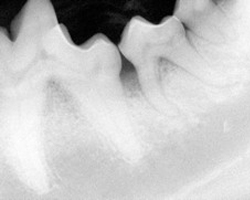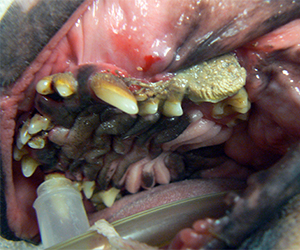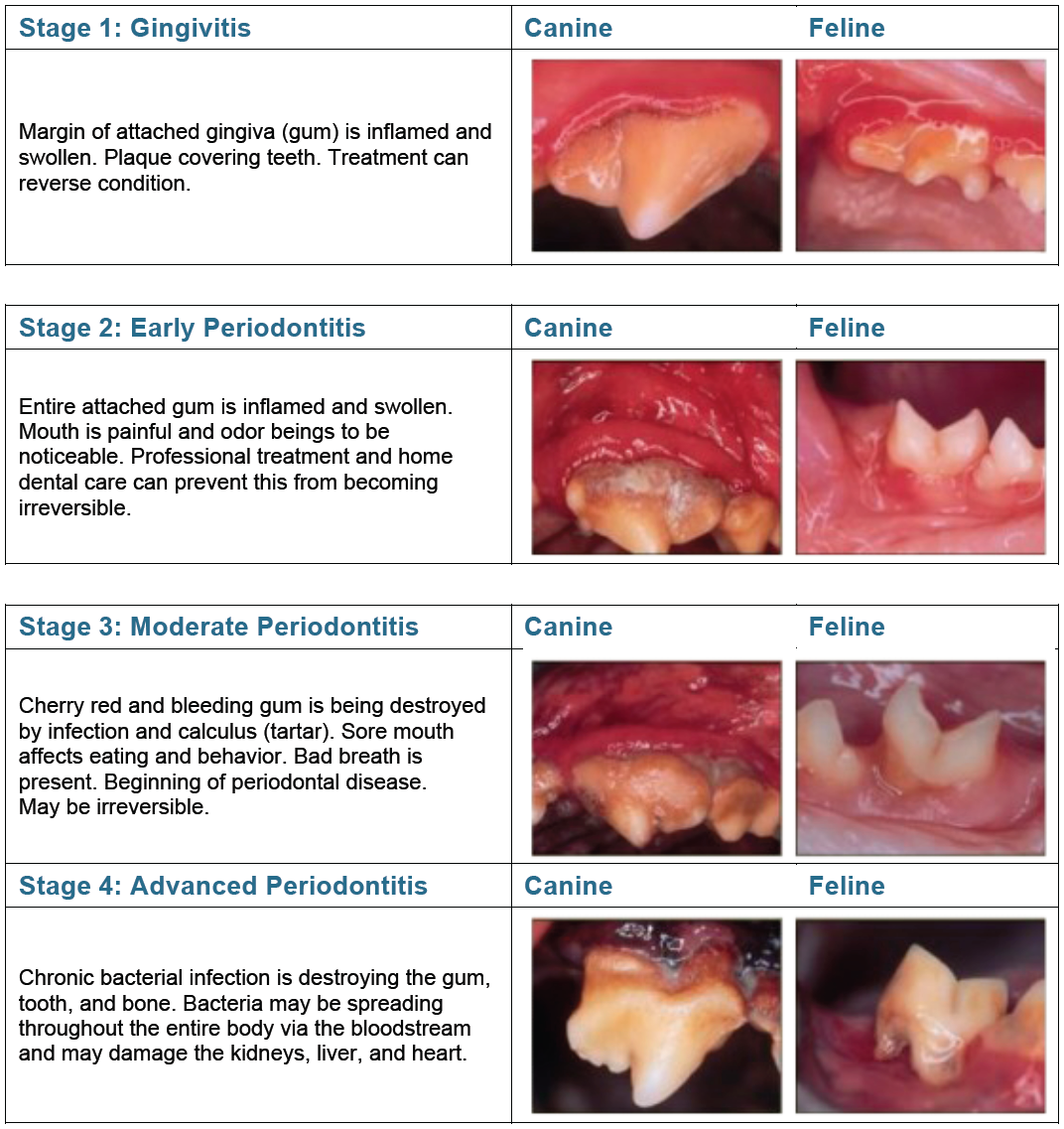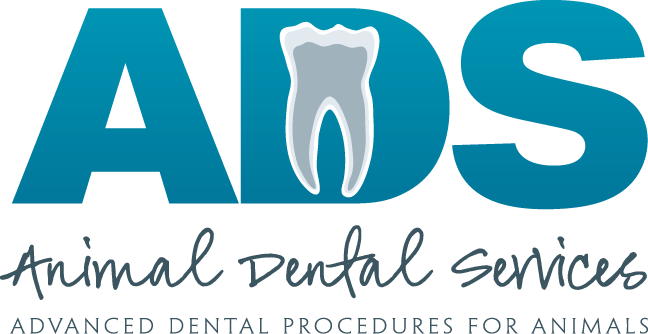Periodontal Disease in Dogs and Cats

Mild loss of supporting bone between the lower 1st and 3nd molars

Advanced periodontal disease
Periodontal disease (gum disease) is the most common dental condition we see in dogs and cats. In fact, more than 85% of dogs and cats older than four years have periodontal disease of varying stages. Essentially, it is an infection of the tissues that surround and support the teeth.
Causes of Periodontal Disease
Periodontal disease starts with the development of plaque, a transparent film of bacteria that is constantly forming on the teeth. Plaque starts forming twelve hours after a dental cleaning. If the plaque is not removed, mineral salts in the food will rapidly begin to form hard dental calculus. The calculus is irritating to the gingival (gum) tissue, and changes the pH of the mouth allowing different types of bacteria to survive below the gingiva. By-products of these bacteria “eat away” at or erode the tooth’s support structures, eventually causing damage to the tooth or the tooth to “die”. Periodontal disease can also be caused or exacerbated by poor alignment of the pet’s teeth, and orthodontia (link to orthodontics) may be in order in these types of cases.
As with most medical conditions, prevention is key. However, early detection and treatment of periodontal disease can make a significant impact on outcome as explained below:

The Dangers of Periodontal Disease
In addition to bad breath, a pet with periodontal disease is susceptible to loss of bone and soft tissue around the tooth, tooth loss, weakening of the jaw bone causing factures, and bacteria from the mouth can enter the bloodstream causing changes in the heart, liver and kidney functions. Studies in humans have linked periodontal disease to a variety of health problems including diabetes.
Preventing Periodontal Disease
You can help prevent periodontal disease from developing in your pet by practicing good oral hygiene at home. This includes daily brushing of your pet’s teeth. You can also ask your primary care veterinarian for recommendations on dental treats, chew toys, and other at-home oral hygiene strategies that help clean your pet’s teeth. These should not replace daily brushing, but can be a nice supplement. Lastly, don’t skip on your pet’s annual wellness exam. During the wellness checkup, your veterinarian will check your pet’s teeth. If your pet’s teeth have tarter or a lot of plaque, a professional dental cleaning will be necessary.
